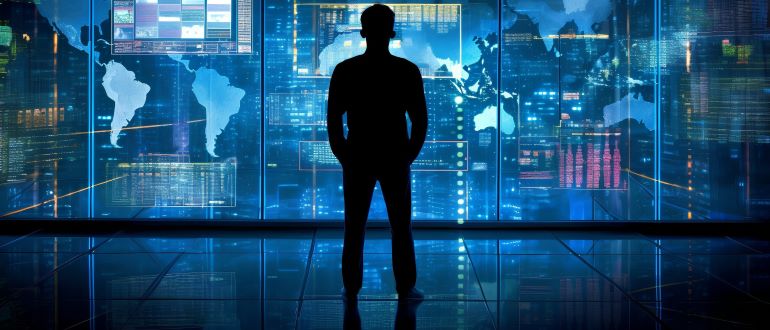
Apple Inc. entered its developers conference Monday with plenty of questions swirling around its artificial intelligence (AI) strategy. After a two-hour presentation, it left with just as many.
Apple Intelligence, the crown jewel of the company’s strategy, was a relative no-show, raising concerns the Steve Jobs-founded icon has further ceded its innovative mantle and calling into question (again) its ability to come up with edgy, hit products the past decade. Instead, Apple focused on design changes to iOS and Liquid Glass, a new user interface look.
What little news Apple shared on AI was incremental. The company said it had upgraded Visual Intelligence, which lets users point their camera at live or on-screen content and tap on an “Ask” button to handle queries via ChatGPT. The company’s newly branded iOS 26 includes an enhanced Image Playground in partnership with OpenAI, where users can transform contact posters into creative styles such as water colors or futuristic, for calls and messages. And Apple introduced a new Foundation models framework that allows third-party apps to tap into Apple Intelligence. Developers can use Apple’s API to integrate their features into Apple Intelligence.
“Liquid Glass is cool. It’s very Apple. But in the context of what Apple investors wanted yesterday at WWDC, I saw it as a parlor trick. A sleight of hand,” Daniel Newman, CEO of The Futurum Group, said. “‘Look over here at our cool new UI while we continue to fumble the ball on the AI opportunity.'”
“Visual Intelligence is interesting but the fact that this is one of Apple’s few AI features is quite telling,” PulseJet Studios founder John Gearty, who was engineering program manager on Apple Vision Pro, said in an email. “I interpret this to mean that artificial intelligence is still not quite yet ready for prime time by the broad user base that Apple serves.”
For many, the developer update, especially around AI, was a disappointment, underscoring the yawning gap between Apple and its Big Tech brethren who have plunged headlong into AI development.
Even Apple champion Dan Ives, an analyst at Wedbush Securities who earlier believed Apple was on the cusp of an “AI monetization period of the Apple ecosystem,” deemed the event a “yawner” for AI news.
“Overall, WWDC laid out the vision for developers BUT was void of any major Apple Intelligence progress as Cupertino is playing it safe and close to the vest after the missteps last year,” Ives wrote in a note to investors after the event Monday. “We get the strategy but this is a big year ahead for Apple to monetize on the AI front as ultimately Cook & Co. may be forced into doing some bigger AI acquisitions to jumpstart this AI strategy.”
A partnership with Chinese tech giant Alibaba is equally crucial to long-term growth catalyst in the region, he said, because more than 100 million of the roughly 200 million iPhones in China are “in the window of an upgrade opportunity.”
While some AI features compatible with the latest iPhones gradually emerged late last year as part of free software updates, Apple still hasn’t been able to turbocharge Siri as it promised a year ago. Delays were so commonplace Apple stopped short of promoting Siri in its AI marketing campaigns earlier this year.
“It’s just taking a bit longer than we thought,” Apple CEO Tim Cook told analysts last month when asked about the company’s headaches with Siri. “But we are making progress, and we’re extremely excited to get the more personal Siri features out there.”
As Apple dithers, its AI rivals are plowing full steam ahead. ChatGPT maker OpenAI agreed to acquire io, a startup from former Apple design legend Jony Ive, for $6.4 billion to develop a new device that could compete with iPhone. Meantime, Alphabet Inc.’s Google is packing more AI into its Pixel smartphones while dramatically improving its search engine. Samsung has also gone all-in on AI with its smartphone lineup.
“Of course, Apple is late to AI, but they are essentially a toll collector on its unmatched global ecosystem as any AI app to consumers will ultimately go through Apple as we saw firsthand with DeepSeek earlier this year,” Ives wrote in a separate note to investors on Friday. “This continues to be the major piece of the Apple AI strategy that investors are missing…it’s less about the killer app/LLM from Apple itself and more around being a foundation for consumer AI agnostic of the LLM.”
Apple’s AI quandary underscores deeper worries on regulatory and geopolitical fronts. As one federal judge considers banning long-running deals worth $20 billion annually to Apple as part of countermeasures to Google’s illegal search monopoly, another forbid Apple from collecting commission on in-app transactions processed outside its payment system.
Deepening the angst, Apple faces a 25% tariff on goods, including iPhone and other hardware devices, amid President Donald Trump’s escalating trade war with China and his insistence that Apple make its products in the U.S.

